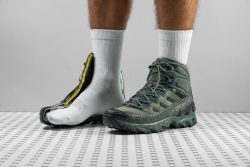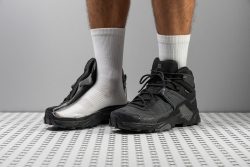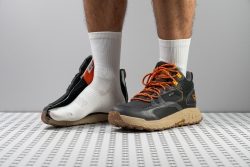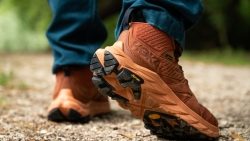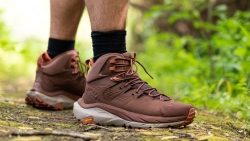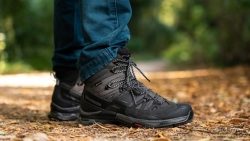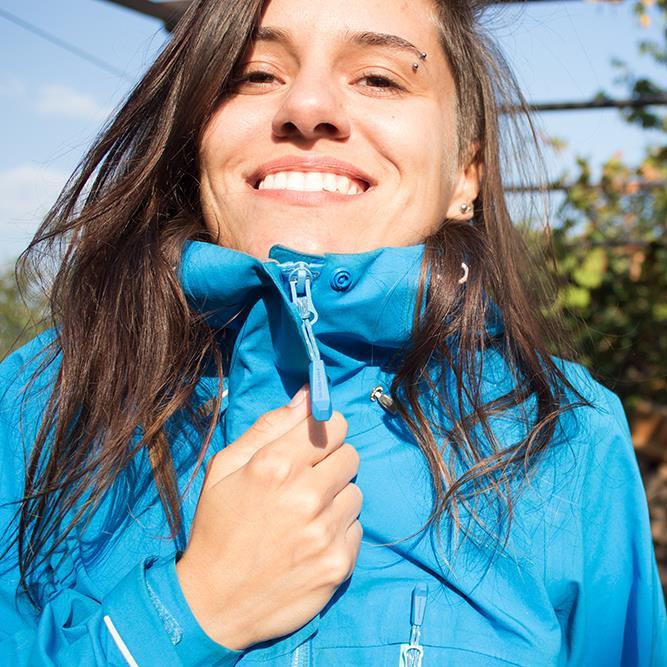5 Best Lightweight Waterproof Hiking Boots in 2025
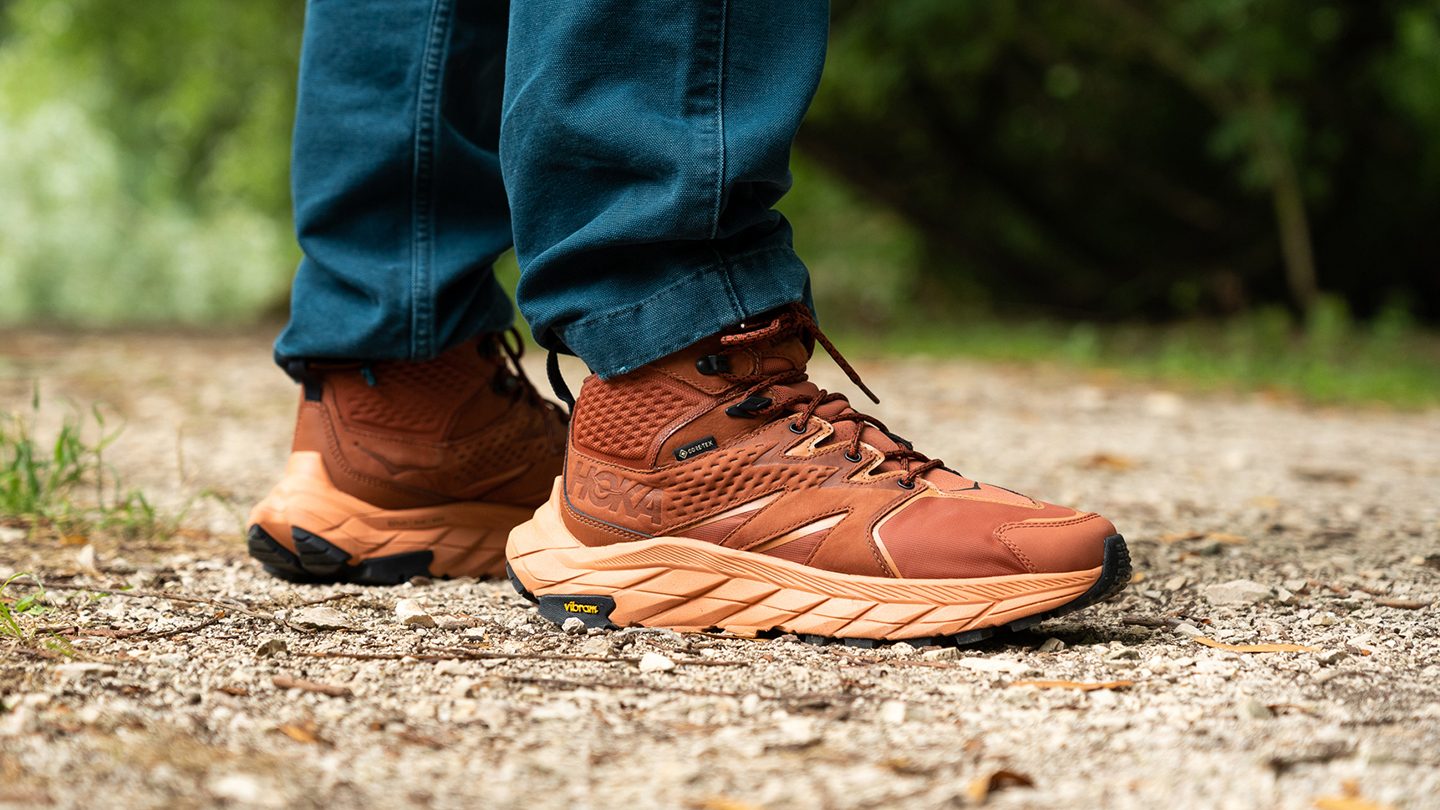
We buy shoes ourselves. We earn commissions when you buy through us, at no extra cost. Why trust us
It’s about time to switch from your clunky boots to these top-rated lightweight kicks. Utilising innovative concepts and technological advances in boot-making, giant footwear brands like Lowa, Salomon, Merrell, Adidas, and Columbia keep surprising us with their lightweight collection (boots that weigh less than 17.6 oz or 500g).
Picking the perfect pair for you can be time-consuming. We can help you with that! Since we personally wore the boots during our hikes, we got a feel for each pair. We also properly tested them in the lab on our standardised tests. Here, we give you our lightweight waterproof hiking boot top picks and explain why we chose them as the best!
How we test lightweight waterproof hiking boots
To publish reviews that are as objective as possible, one needs to buy the boots on their own, test the boots on foot and in the lab. We do all of that! Before publishing our reviews and rankings of hiking boots that weigh less than 500g, we do the following:
- We purchase lightweight waterproof hiking boots from various brands. We invest our own funds to maintain the objectivity of our reviews and rankings.
- We go for day hikes or long-distance treks, covering significant mileage in each pair. We test the footwear’s performance, shock absorption, traction, waterproofness, durability, and reliability in different setups.
- We get more information from our lab tests, which allows us to publish shoe reviews with 20+ data points that are comparable across the whole hiking category.
Best lightweight waterproof hiking boots overall
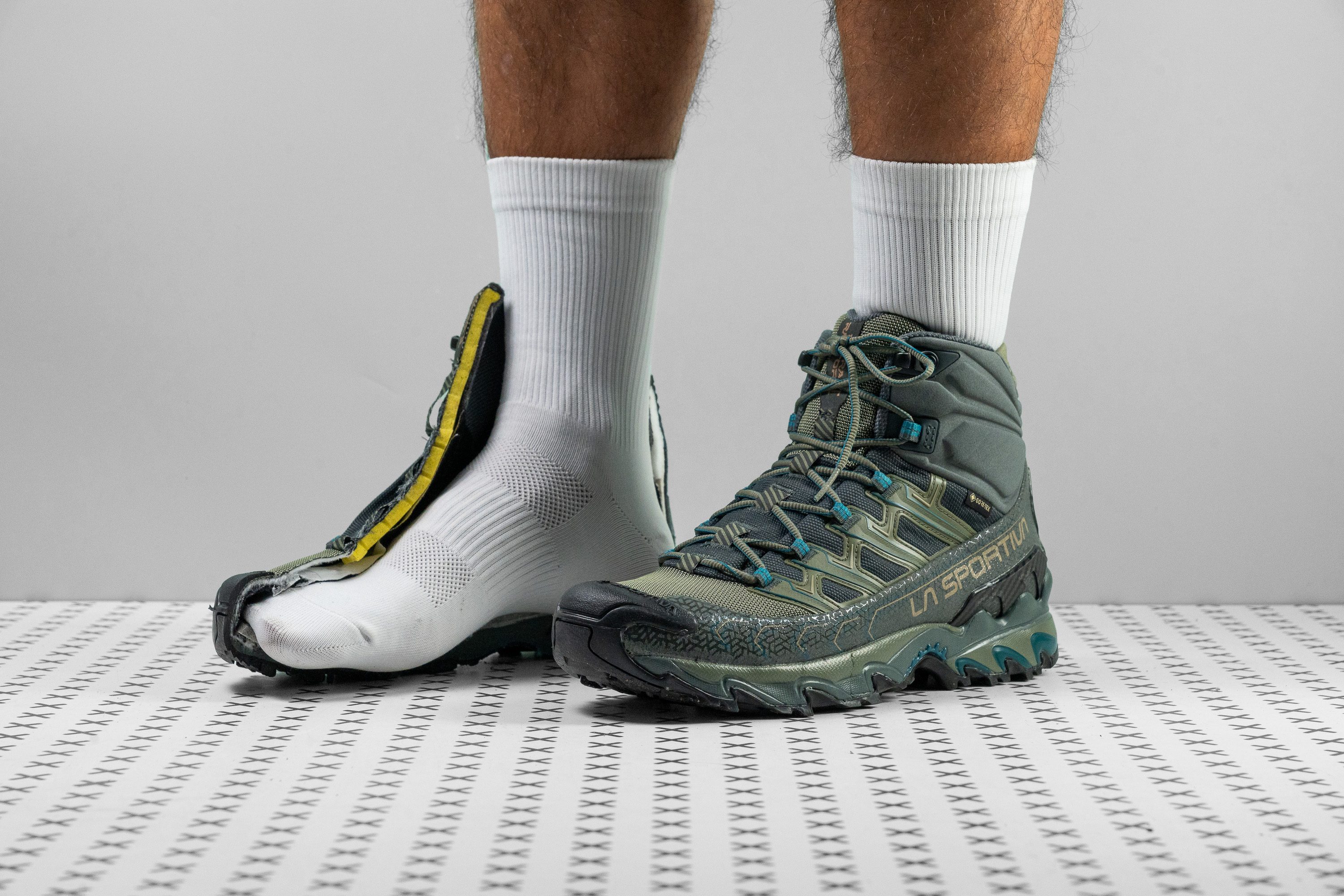















































What makes it the best?
We evaluated lightweight hiking boots in the lab and during our trail adventures and crowned the La Sportiva Ultra Raptor II Mid GTX as the best overall. It stands out with its shoe-like weight and flexibility, which enhances our agility. Our hikes feel effortless and surprisingly surefooted.
We discovered that Ultra Raptor II Mid GTX lies between a hiker and a trail runner — giving a boot’s protection while having a shoe’s sensation. Weighing 14.6 oz (415g), it’s a mindblowing 21.8% lighter than the average hiking boot! It significantly sheds off grammes by maintaining a humble stack that gives us more control through better ground feel.
Because of its below-average 34.4/20.3 mm stack, the platform feels easy to manoeuvre. In our bend test, it needs 14.6% less force than average to reach 30 degrees, significantly reducing the effort we have to exert since the boot has minimal resistance.
In terms of lateral movements, the boot does its job of preventing our feet from spilling over to the side. It offers a firm foothold through its stiff heel counter (4/5) that avoids excessive rear movement. The boot also offers protection through its grippy 4.3 mm lugs, offering the traction we need for various terrains.
However, the streamlined dimensions of the boot narrowed the toebox. Those with wide feet or who prefer more room for toe splay should check alternatives.
Pros
- Unbelievably lightweight
- Excellent waterproofing
- Doesn't let debris and falling rain/snow inside
- Exceptionally robust and durable
- Phenomenal grip on technical terrain
- Not so stiff and firm in low temperature
- Sufficient impact protection
- Highly supportive collar
- Ample flexibility
Cons
- Narrow platform
- Not for wide feet
Lightweight waterproof hiking boots with the best shock absorption
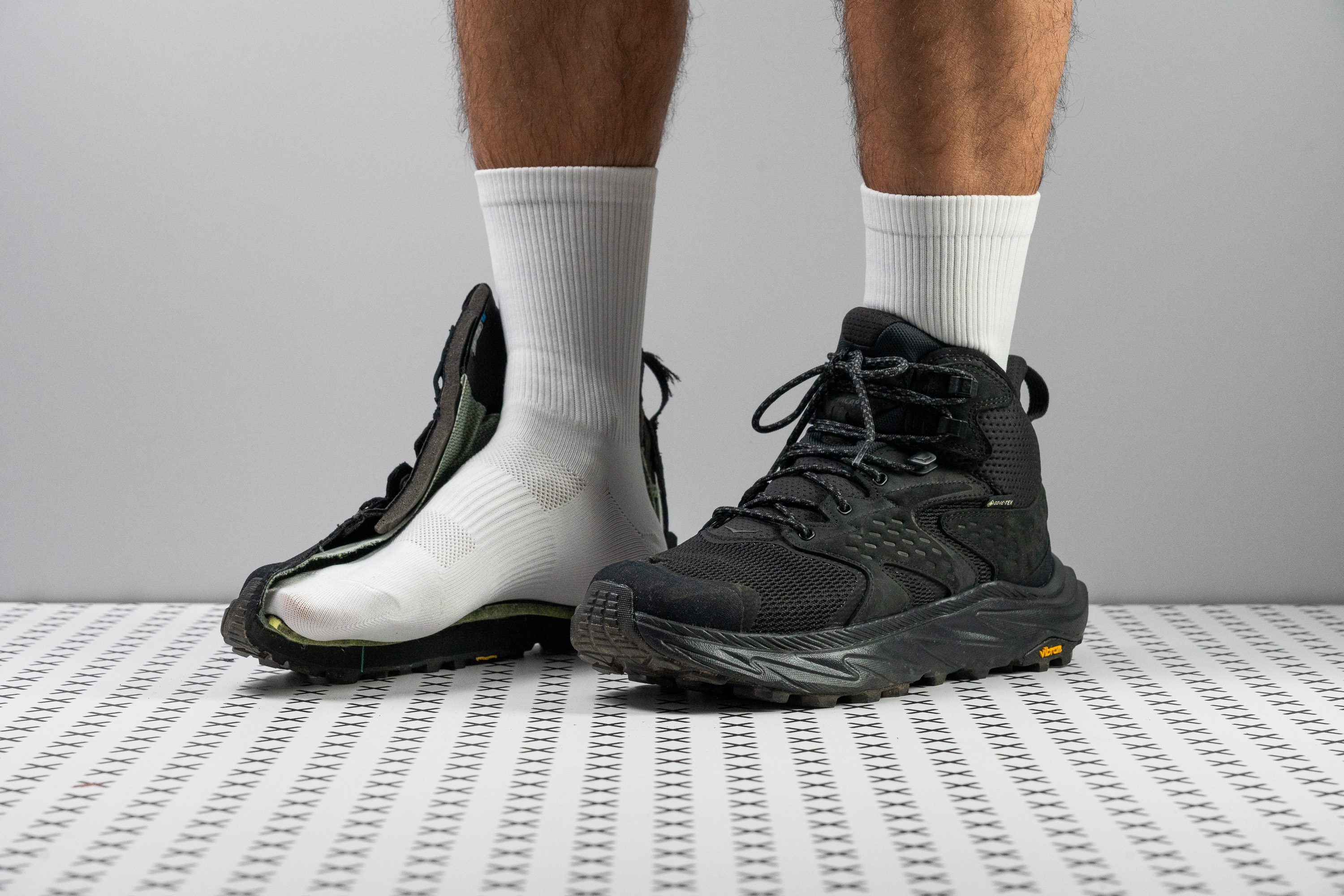












































What makes it the best?
The Hoka Anacapa 2 Mid GTX offers maximum impact protection that minimises fatigue after day-long treks. Besides its plush cushioning, its adaptability and weightlessness feel soothing, wrapped in a watertight package that effectively kept us dry. Backed up with its strong performance in lab tests, this boot offers the best shock absorption among lightweight waterproof hiking boots.
We recorded a strong shock absorption score of 118 SA in the heel, making the Anacapa 2 Mid GTX 26.7% more protective than average. Its comfort is further enhanced by the SwallowTail design, which smoothens our forward movement, leading us from our heels to our toes.
The boot made us feel agile with its minimal 17.4 oz (494g) build, 7.0% below the average hiking boot. Its pliable forefoot allows us to manoeuvre through the trails quickly, emerging 21.0% more flexible than average in our bend test. These features enhance versatility and comfort for long hours of wear.
Having tested the boot in rain and shallow streams, we can confirm that not a single drop of water entered the boot. Even vapour couldn’t escape in our smoke test, cementing its effective waterproofing with a 1/5 breathability score.
While the extended heel felt great on packed ground, it felt tricky to deal with in rocky terrains and descents. We recommend a more grounded boot with a classic design for these types of trails.
Pros
- Well-cushioned for long miles
- Very comfortable step-in feel
- Highly stable platform
- Excellent waterproofing
- Solid grip, even on soft terrain
- More flexible than other boots
- Decent durability for moderate hikes
- A lot of sustainable components
Cons
- Extended heel catches rocks
- Not for technical terrain
- Gained 2 ounces
Lightweight waterproof hiking boots with the best stability
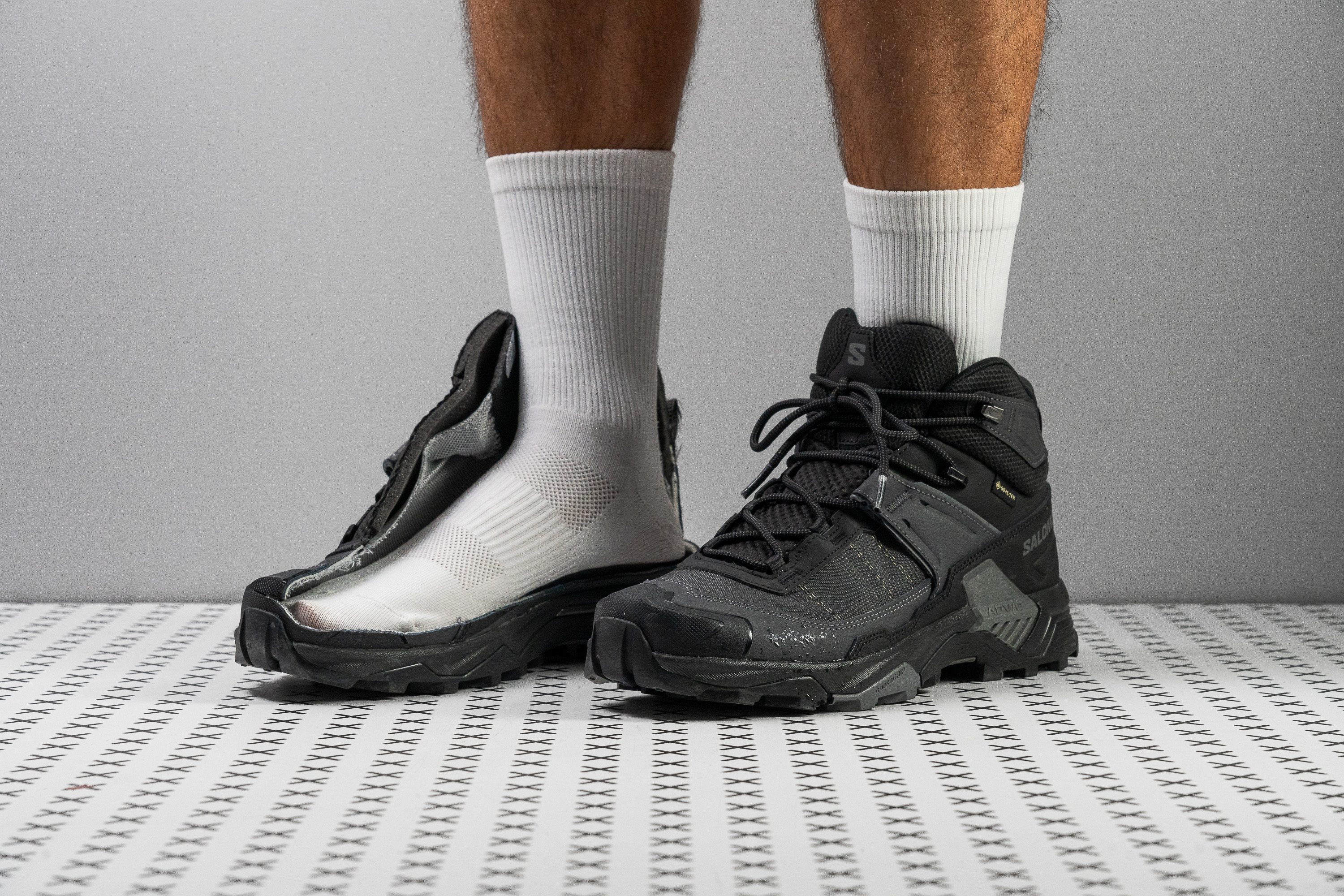











































What makes it the best?
Light on the feet but heavy on protection, the Salomon X Ultra 5 Mid GTX effectively shielded us from losing our balance on uneven terrain, making it our best stability hiking boot in the lightweight waterproof category. Our feet remained warm and dry throughout our treks, and our lab results back up its sealed-tight nature.
Our surefootedness stems from the Advanced Chassis, which is a stiff TPU that cages the midfoot area. This structure prevents us from buckling over as it offers effective lateral support with its maximum 5/5 torsional rigidity.
During our encounters with shallow streams and puddles, we didn’t have to deal with the discomfort of getting our socks wet. The upper consists of a tightly woven Matryx upper combined with a Gore-Tex membrane that makes the boot impermeable. Even the smoke we pumped in couldn’t escape, so we awarded it the lowest 1/5 breathability score.
Moving feels easy care of the boot’s unburdening build. Our scales reveal it’s only 15.4 oz (437g), making it 17.7% lighter than the average hiking boot. Moreover, its bendable build adds to its lightweight feel, emerging 34.3% more malleable than average in our bend test. Altogether, we found it comfortable and versatile for daily use.
However, it lacks the aggressive lugs needed for dealing with deep mud, so it’s best to avoid these types of soft surfaces while using this boot.
Pros
- Stable and grounded platform
- Flexible forefoot adds manoeuvrability
- Great grip on wet terrain and rocks
- Surefooted on mixed and hilly trails
- Much lighter than average
- Excellent Gore-Tex waterproofing
- Tough and durable upper
Cons
- Minimal cushioning and shock absorption
- Not for deep mud
Lightweight waterproof hiking boots with the best comfort
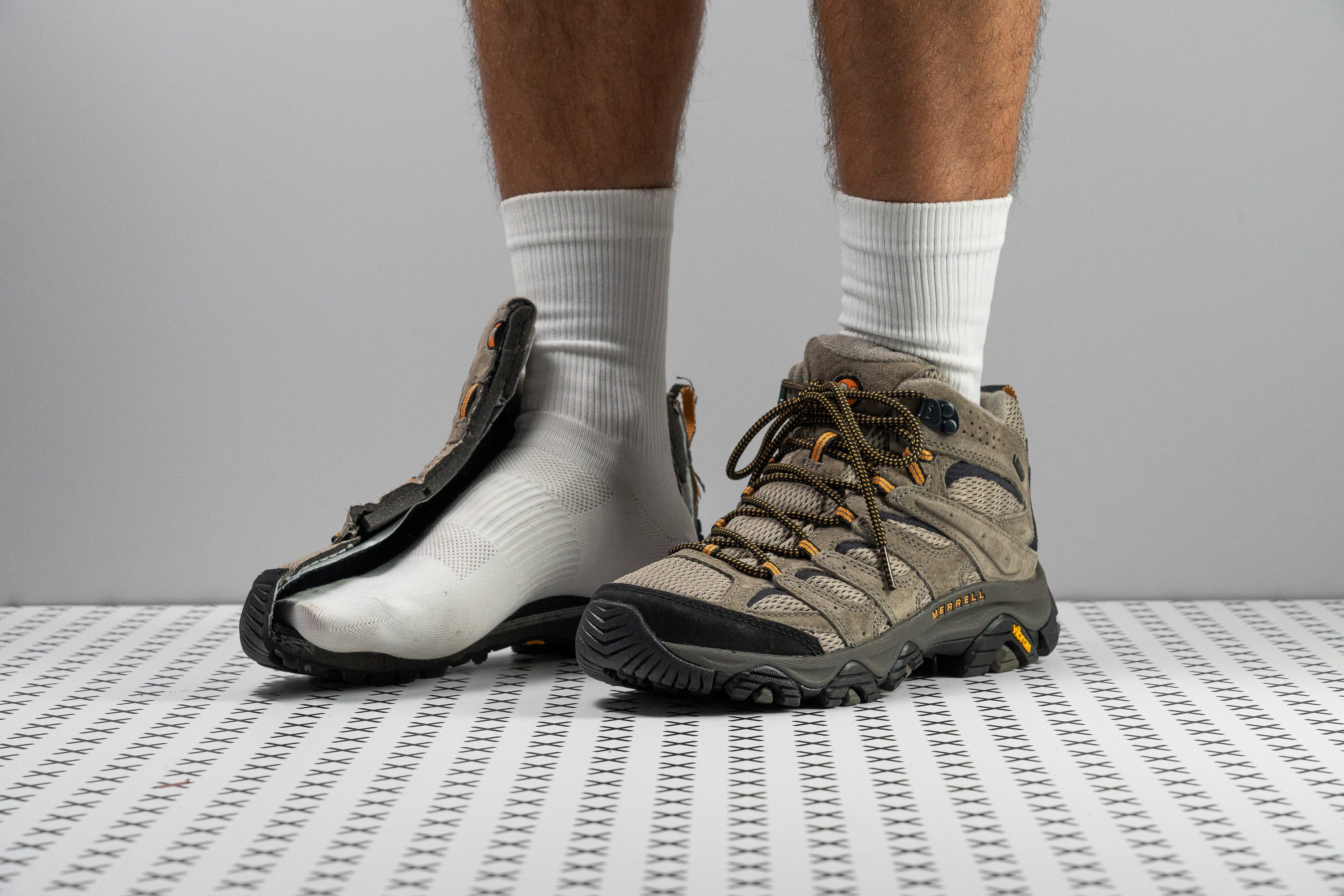






















































What makes it the best?
Low on resistance and light on the feet, we found Merrell’s Moab 3 Mid GTX as the most comfortable boot in the lightweight waterproof category. It has unmatched lightness, cosy comfort, and reliable protection, which our feet truly enjoy.
We found that this boot feels pleasant even for all-day wear, and our scales confirm it’s only 17.5 oz (495g), 6.8% lighter than the average boot. Together with the bendable midsole, which scored at par with average in the lab, it enhances versatility.
We tested the Gore-Tex upper in damp conditions, and it effectively kept our feet safe and dry. This boot is all about protection, with its tightly-knit upper keeping debris away. In our smoke test, we couldn’t rate it anything higher than 1/5 in breathability.
Not only that, its platform ensures our safety from landing impact and unwanted elements underfoot. The cushioning spoiled our feet to a heavenly delight, measuring an above-average 36.1 mm in the heel. In order not to lose our adaptability, it offers ground feel through its moderate shock absorption of 88 SA.
We wish the mesh panels were more durable. Once ripped, as our Dremel easily did, its waterproofing capacity is gone.
Pros
- Best-in-class waterproofing
- Great stability for moderate hikes
- Supportive for all-day wear
- Comfortable step-in feel
- Excellent grip on hard terrain
- Secure lockdown
- Sturdy construction
- Sturdy construction
Cons
- Moderate impact protection
- Mesh panels are easy to tear
- Not for mud or soft terrain
- Moderate impact protection
Best lightweight waterproof city-to-trail hiking boots
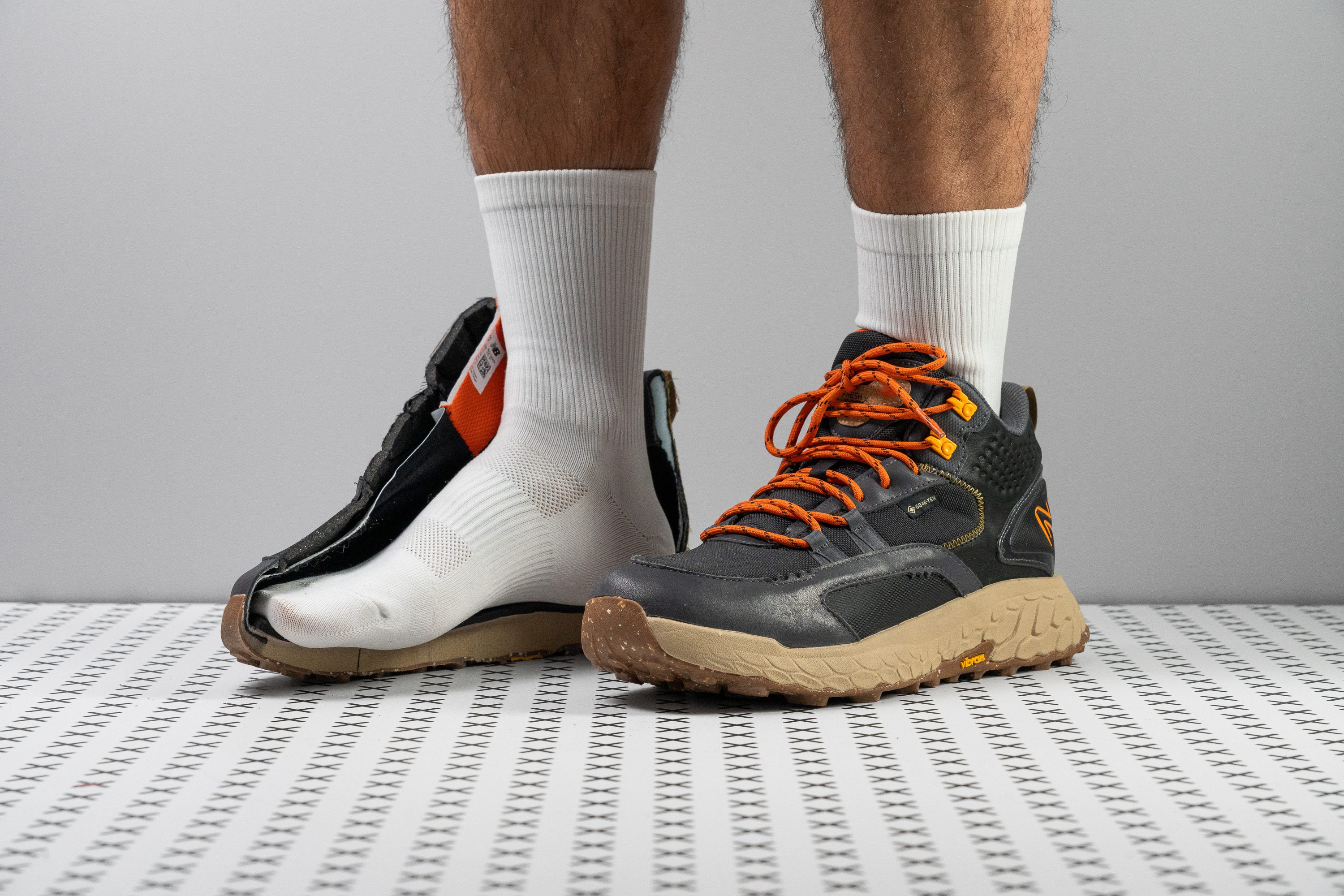









































What makes it the best?
A well-rounded boot with plenty of features to keep our feet safe and comfy on the hill, the New Balance Fresh Foam X Hierro Mid GTX is our top choice for a city-to-trail lightweight waterproof hiking boot. With exceptional grip, superior protection, and Gore-Tex lining, we can’t get enough of this lightweight boot!
The all-day comfort we experienced in this boot is mainly because of the exceptional cushioning underfoot. Both protective and responsive, it’s no wonder this sumptuous midsole keeps our feet happy, mile after mile! Testing for its shock absorption, it scored a high 115 SA, 23.7% above average. Meanwhile, its energy return is a remarkable 59.9%, proving its enjoyable ride.
From wet grass to rough forest trails, this boot has traction ready through its Vibram Megagrip rubber. We measured the lugs to be 4.1 mm deep, with extra protruding micro dots that enhance the shoe’s bite on harder ground.
All in all, this boot surprised us on the scales. At just 13.7 oz (388g), it's 26.9% lighter than average. It’s no wonder our legs had energy to burn, even after our long hikes.
This boot is ready to brave the elements. The Gore-Tex lining kept our feet impeccably dry on shallow river crossings, proven by its waterproof 1/5 breathability score. Just watch out for water creeping into the semi-gusseted tongue or stay below-ankle level!
Pros
- One of the softest hiking boots
- Generous cushioning for long miles
- Much lighter than average boot
- Lively and bouncy ride
- Excellent stability and lockdown
- Flexible forefoot
- Effective waterproofing
- Durable upper and outsole
- Grippy on varied terrain
Cons
- Gets notably firmer in low temps
- Low flood level
- Not for technical terrain
What to expect from lightweight waterproof hiking boots
Rather than the obvious (them being lightweight and waterproof), these boots don’t feel bottom heavy as some other boots do that weigh more. Hikers believe that the price they have to pay is heavyweight, so these shoes go on to deny that. That’s why these boots are great for speed hiking in wet conditions.
However, the price they do pay for being lightweight is not having insulation, which makes them not best for very cold weather.
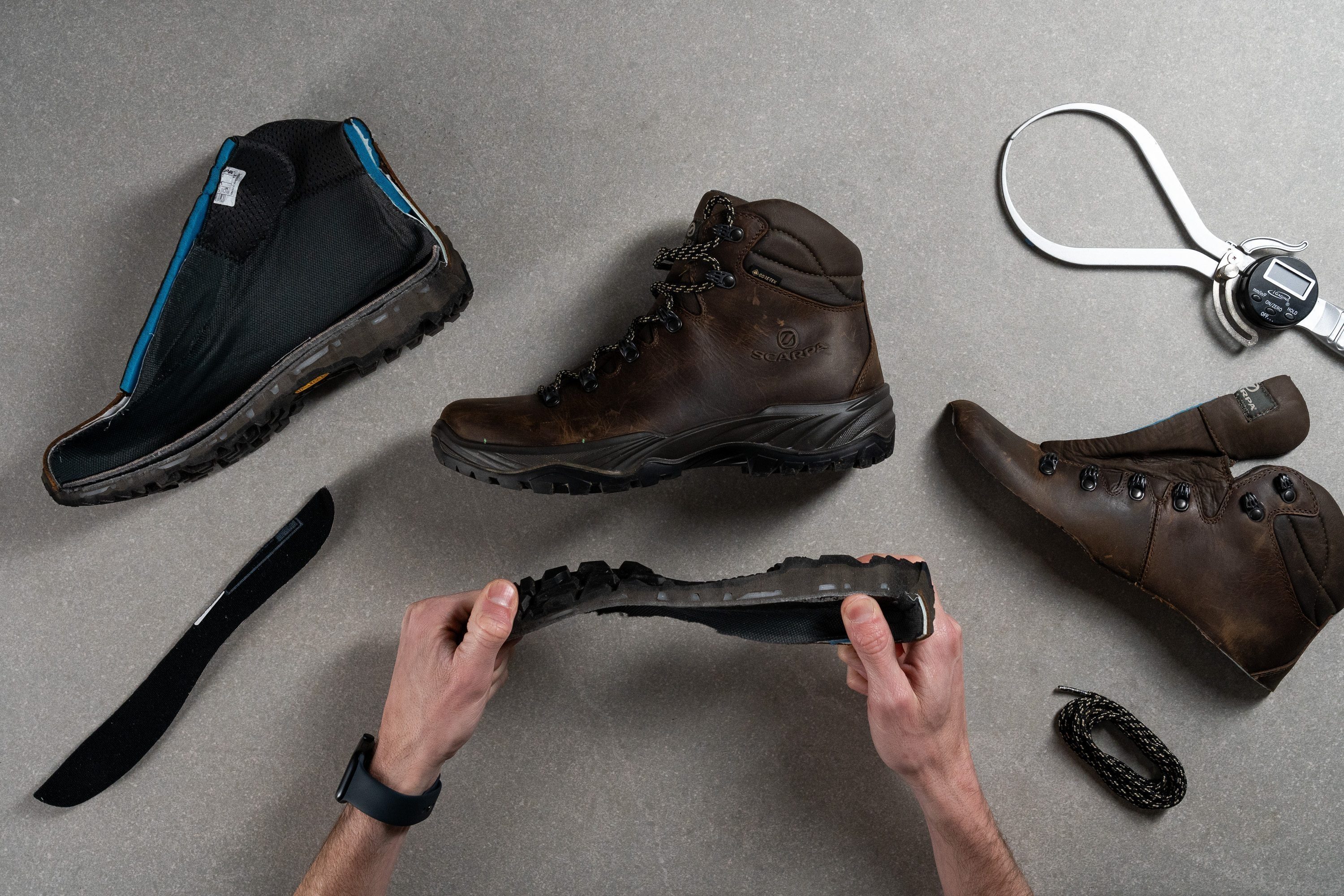
Criteria for lightweight waterproof hiking boots
For a hiking boot to be considered a) lightweight and b) waterproof, according to our criteria, it has to weigh less than 17.6 oz (or 500g) and be, well, waterproof.

Before we cut a boot in half and subject it to dozens of lab tests, we weigh it on the scale in our lab. Thanks to this, we always present a precise weight of hiking boots and, yes, it tends to deviate from what the brand has stated.
For context, at the moment of writing, the average weight of all hiking boots was 17.7oz or 503g, while the average weight of waterproof hiking boots was 18.5oz or 526g.
When it comes to waterproofing, we wear-test the boots to ensure that the waterproof membrane works, but we also look at the laminated materials once the boot is cut in half to see the area covered with the membrane.
We also test the breathability of the boot which indirectly tells us how waterproof it is.
Learn to recognise waterproof hiking boots
The most popular waterproof material used in hiking footwear is Gore-Tex or GTX. It’s also widely used in outdoor apparel. Its logo is easy to recognise and is always found on the upper of the hiking boot, the boot box and (almost always) in the boot name.
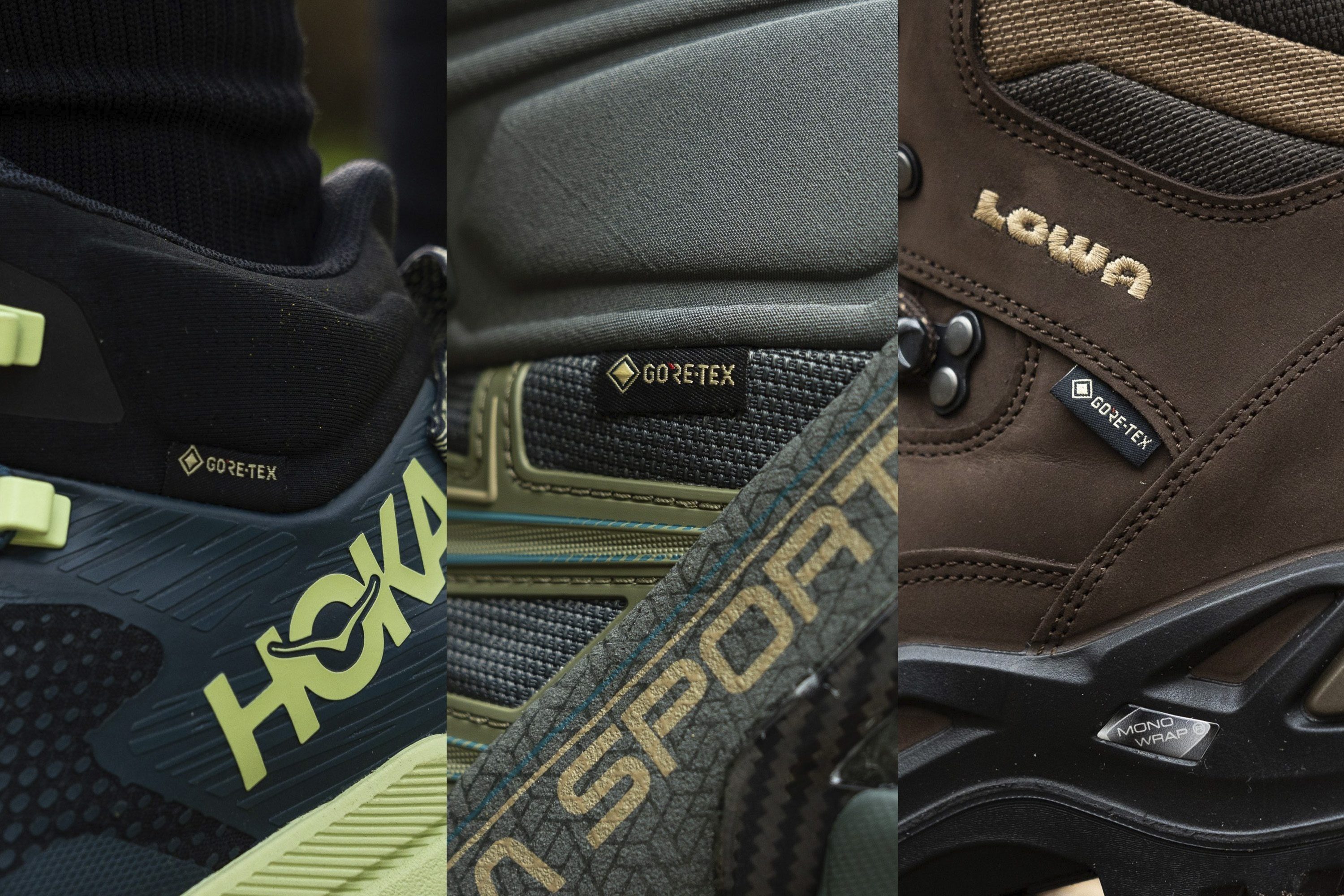
However, this is not the only waterproof material. Some brands develop their own technologies and, if not familiar with those specific names, it’s best to check the name of the boot model or the box/specifications, they always mention the waterproof membrane if it is present.

You may have already seen KEEN.Dry waterproof membrane present in KEEN hiking footwear, or Columbia’s Omni-Tech, or DannerDry waterproof material developed by Danner.
Not breathable = Waterproof
While many brands claim that their waterproof membranes are breathable, our experience has shown the opposite. Both on the test hikes and in the lab.
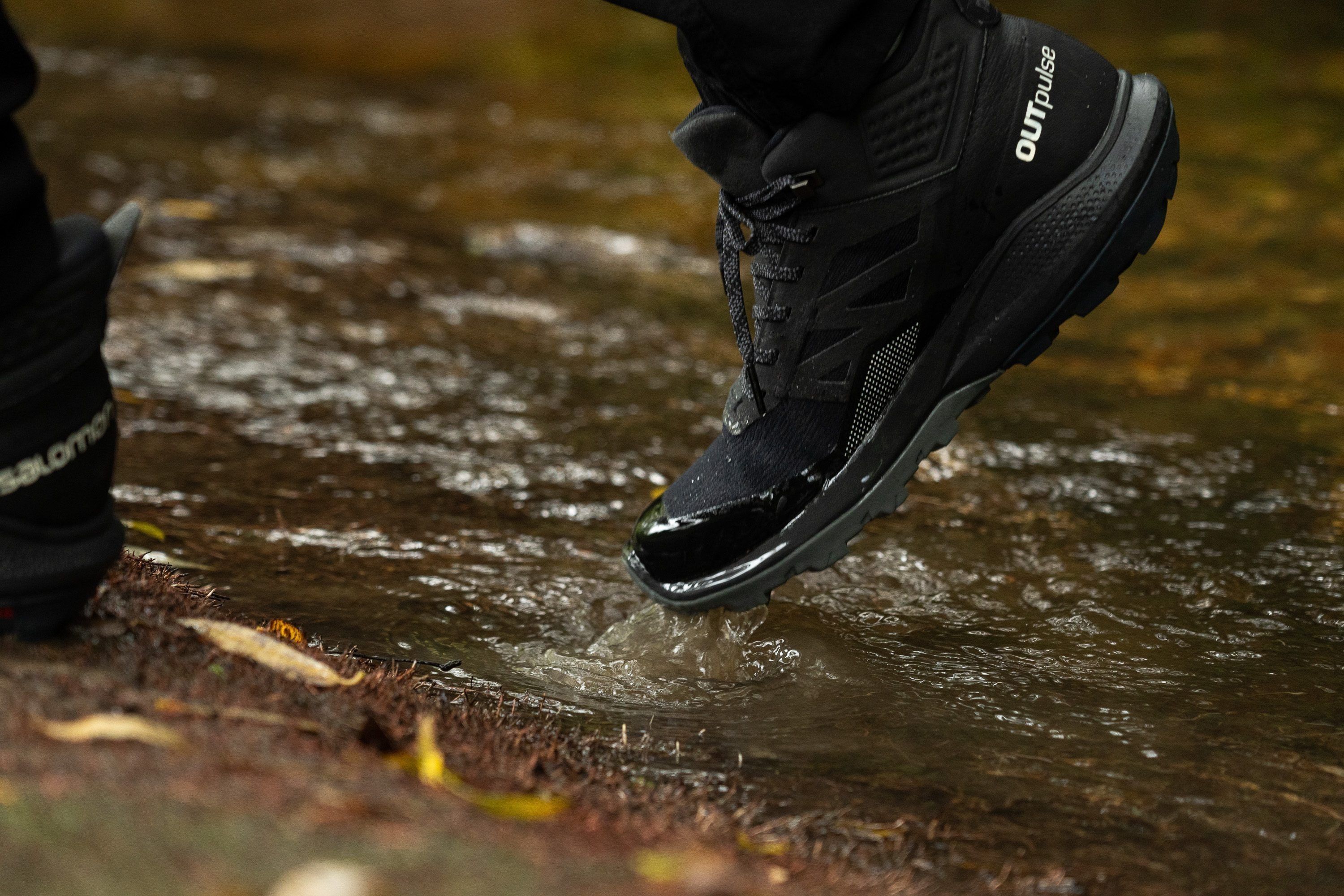
When people hike, the amount of sweat in the boots depends on:
- their feet and how much they naturally sweat,
- the type of socks they chose for that occasion,
- the weather conditions,
- and finally, the boot.
To have an objective approach, we standardised a breathability test. We pump smoke from our smoke machine into the boot and watch where the smoke comes out, when, and at which pace. In breathable hiking boots, we see smoke coming from the sides and the toe box. In non-breathable hiking boots, it doesn’t come out, or it does, but through the eyelets, or it finds holes around our smoke machine pipe.
This happens because of the laminated waterproof membrane that we mentioned above and because the materials used in these boots are more dense or tightly woven. We know that because we look at every upper under the microscope.

Slippery terrain asks for extra grip!
Before deciding which hiking boots you need, it’s important to know what type of the terrain you plan to cover. Just because it is wet, does not mean there’s one tread pattern or lug depth or outsole hardness that will do it all.
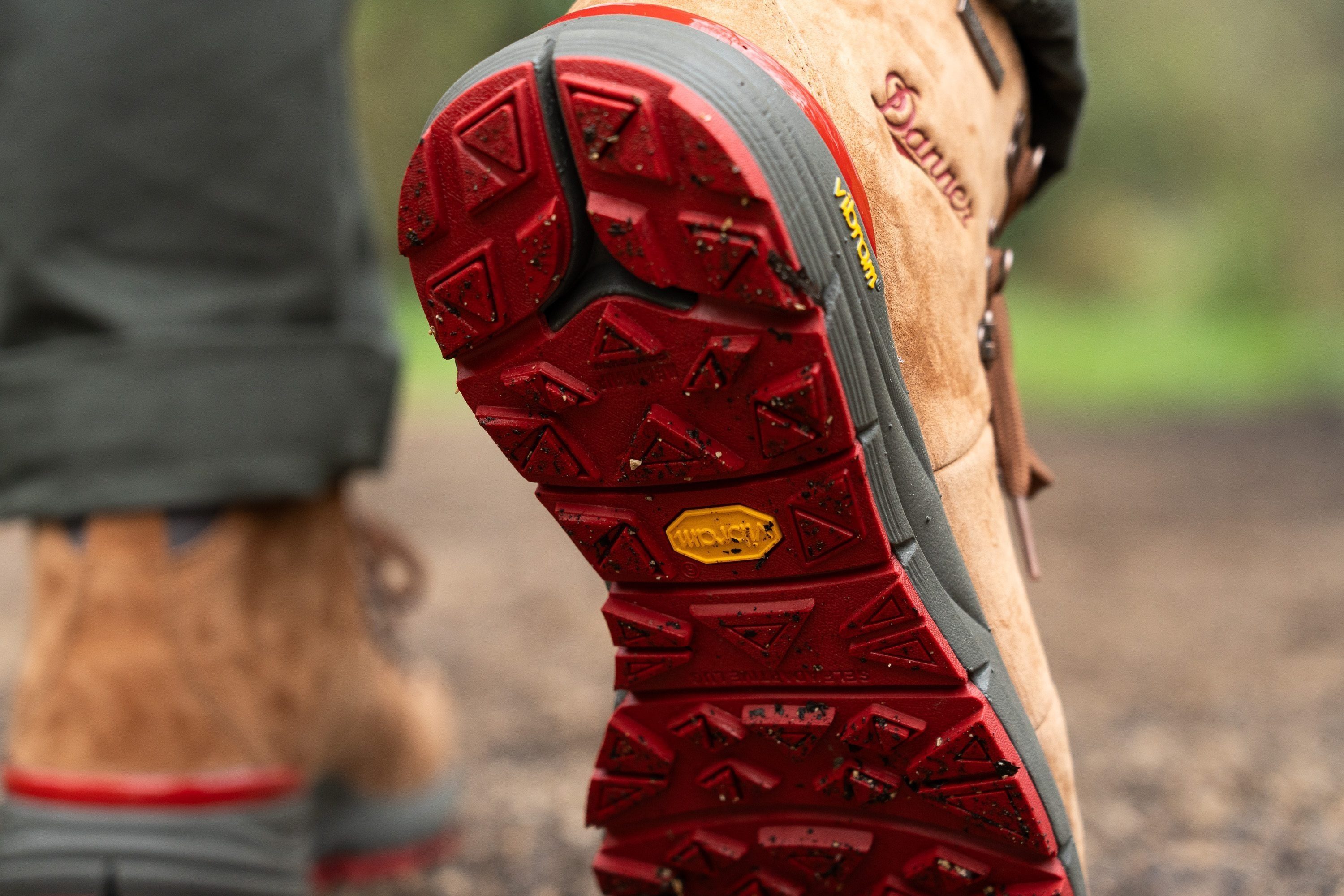
- For large flat rocks, we recommend shallow-to-average lugs (up to 4mm).
- For doing a bit of everything yet nothing too extreme, we recommend average lugs (~4mm).
- For mud, slush, snow, we recommend deep lugs (4mm and thicker).
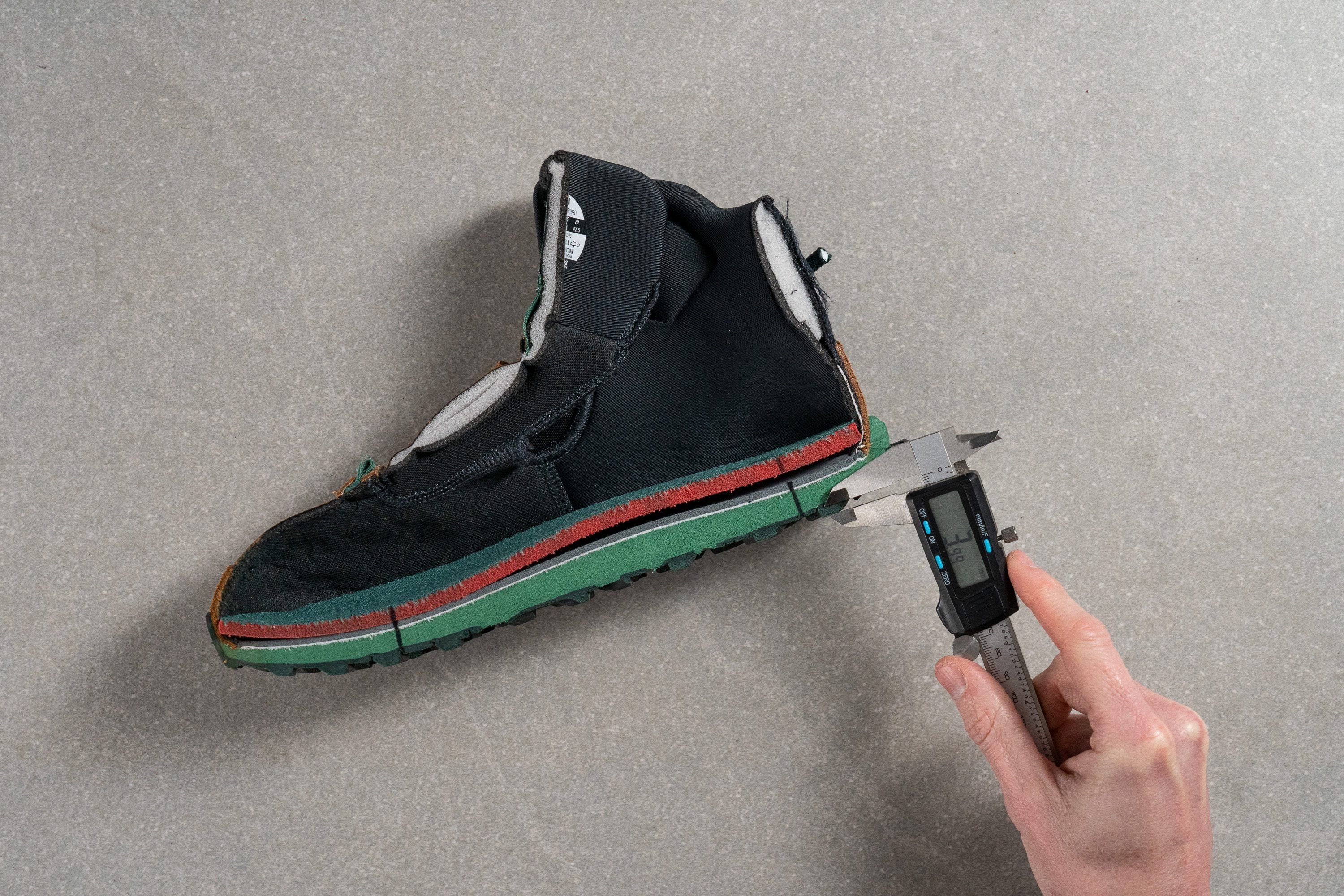
In our lab, we measure the thickness of lugs using a calliper. But, we don’t stop there. Because softer rubber has shown to be more pliable and sticky, and harder rubber has proven to be more protective, we also test the hardness of the outsole rubber.
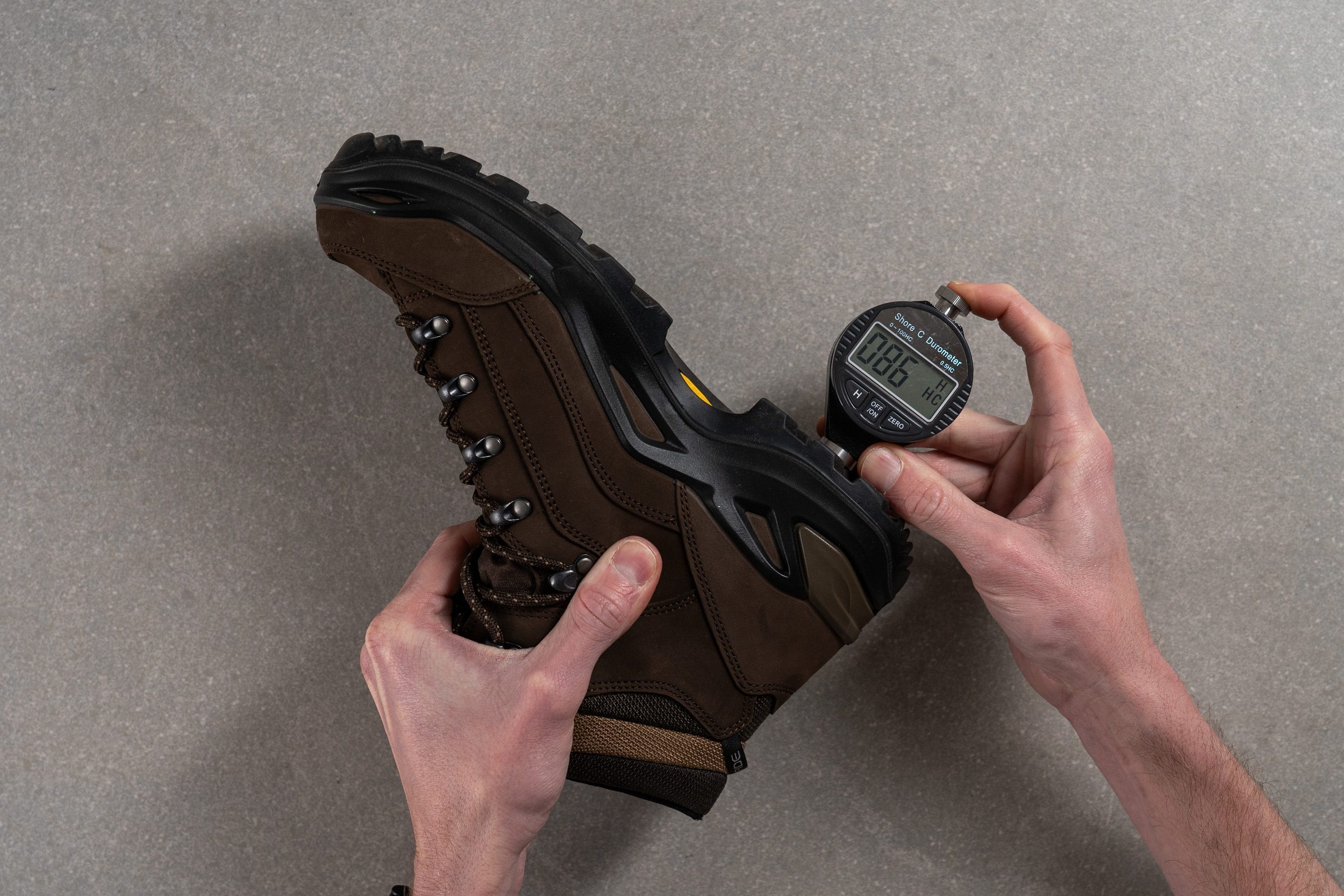
With all these in mind, here are the test results to keep in mind when talking about grip in wet weather:
Keep it stable when hiking in wet conditions
When looking at the hiking boots, they can have a taller and narrower base and they can have a lower and wider base. We recommend the latter for more stable feel when hiking, especially in wet weather.

When doing the tests in the lab, we also measure the width of the base of hiking boots. We measure it both at the forefoot and at the heel. The wider the base, the more stable the boot is!
We double-check this on our wear tests when we pay attention to the lateral stability of each hiking boot pair we test.
3 extra tips for hiking in wet weather
Water can still get into your boots even though they are waterproof.
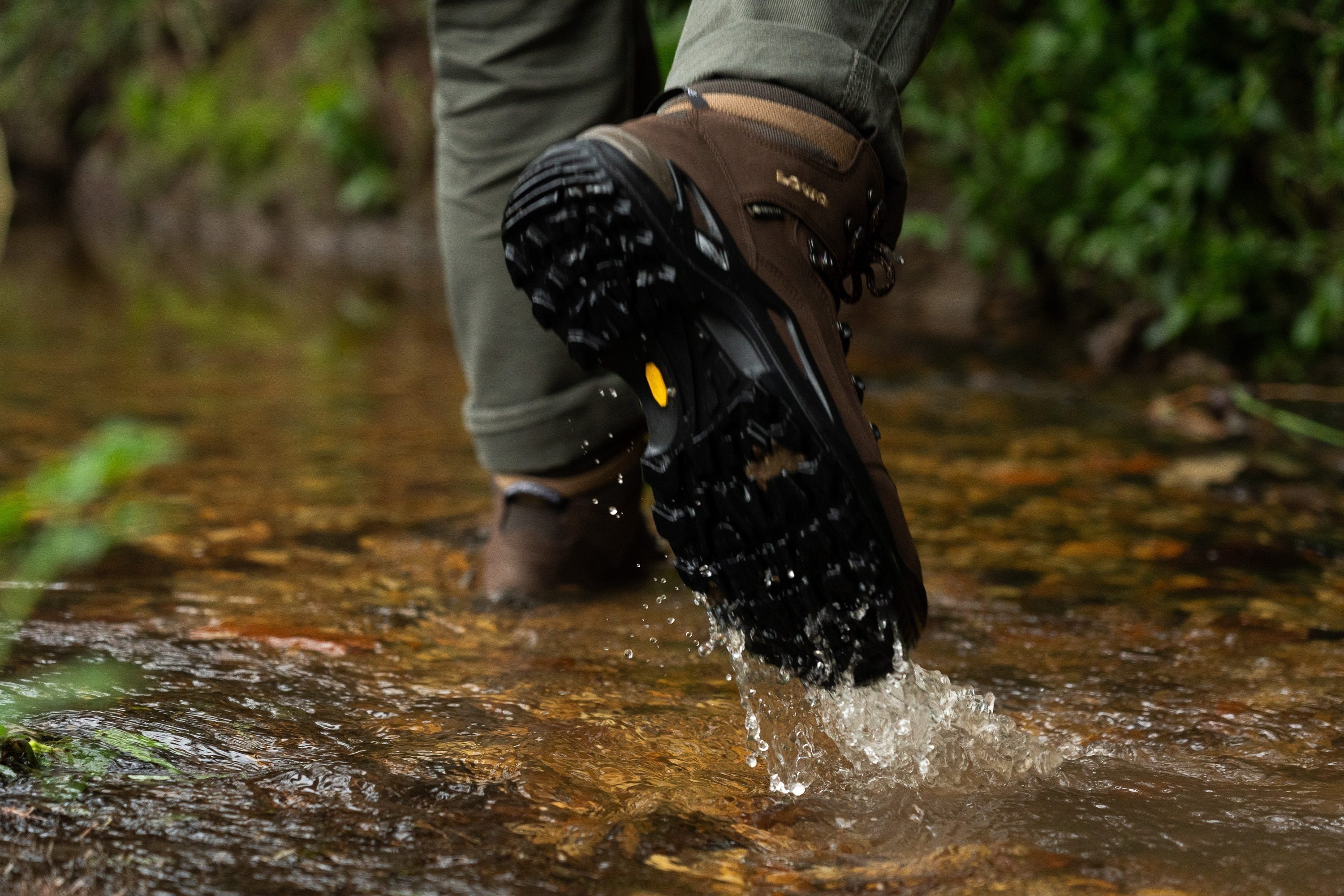
It can simply slide down your legs or trousers. And having water inside of waterproof boots is a nightmare. We recommend:
- Using waterproof knee-high gaiters. They offer that extra level of protection against water and it’s great that they also come in waterproof versions.
- Using wool or bamboo socks. They have moisture-wicking properties and dry quickly.
- Checking whether the boot has a gusseted tongue. Most of them do, but just to be sure. Gusseted tongues prevent the water/debris from getting inside the boot!
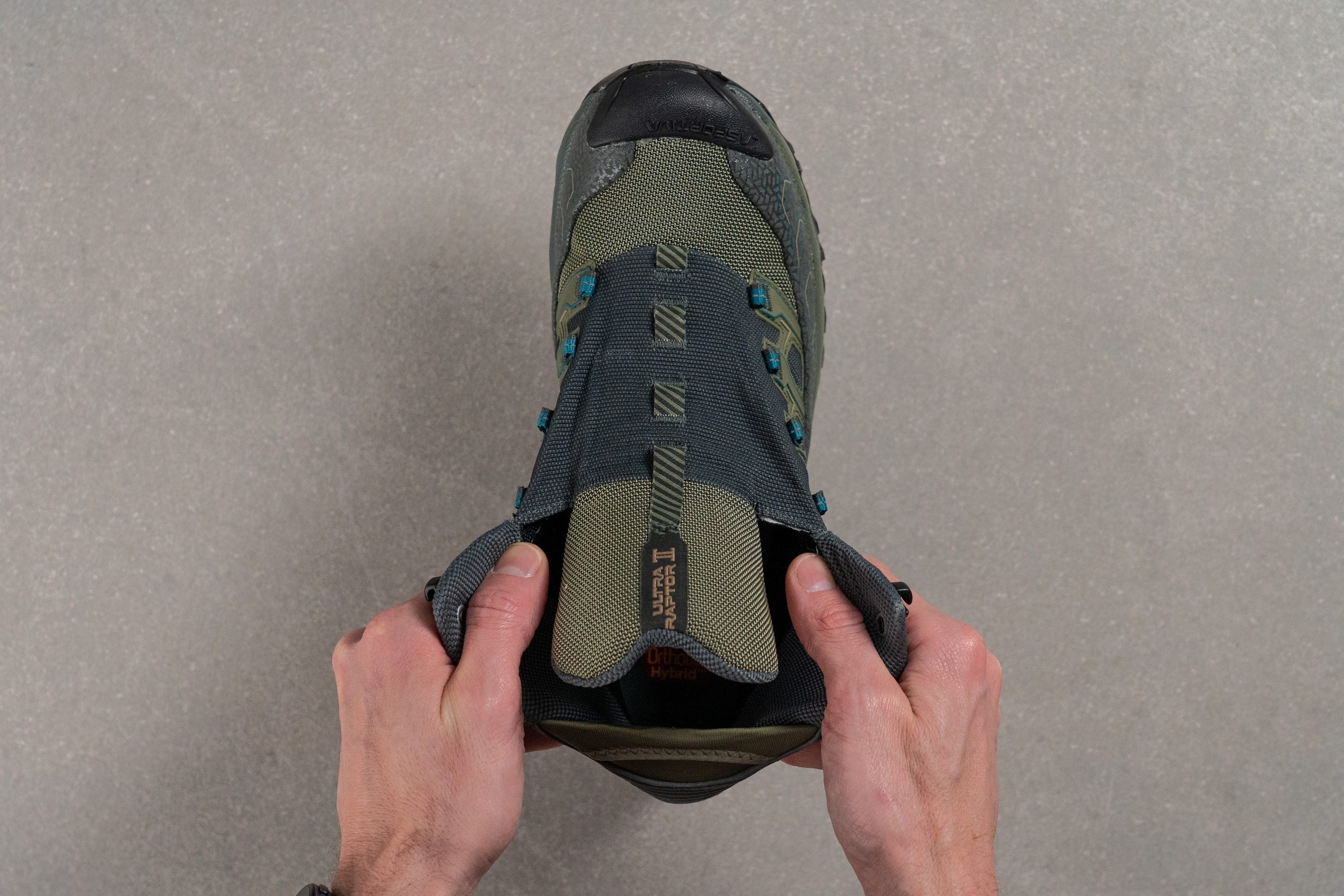
Do you REALLY need waterproofing?
Just because waterproof hiking boots are so bad at breathability, which also means that if the water gets in, it’s almost impossible for it to be evaporated out, you might want to consider lower levels of protection against water.
| Water-resistant | Water-repellent | Waterproof | |
| General characteristics | a tightly woven fabric that is naturally capable of resisting water upon contact | fabric treated with durable water-repellent (DWR) or hydrophobic chemicals | -fabric treated with DWR -have waterproofing membranes like Gore-Tex and OutDry -have seam-sealed construction for extra protection |
| Water protection level | low water protection | moderate water protection | high water protection |
| Water pressure resistance | 0-5000 mm (no pressure or moisture) | 6000-10000 mm (light pressure) | 10000-20000 mm (high to very high pressure) |
| Weather conditions best used in | light rain shower and dry snow | light rain and average snow | moderate to heavy rain and average to wet snow |
Nailing the fit in lightweight waterproof hiking boots
If this is your first time getting hiking boots, these are the steps we always recommend to be taken, to make sure the boots fit as well as possible:
- Go shopping later in the day, in the evening or late afternoon. We advise this because our feet are naturally swollen a bit by then. When hiking, our feet always swell, so it’s best to match those conditions and try the boots on then and there, and not when your feet are fresh.
- When you put the boot on, make sure you have 1 thumb’s width of space in front of your toes (the big toe, usually) when you glue the heel to the back.
- When the boot is laced up, sense if there are any hot spots. There shouldn’t be any. The boot should feel comfortably snug, not too wide, not tight.
- If trying the hiking boots in a specialised store, use the ramp to walk up and down over different artificial surfaces. Your heel should not be slipping and your feet should not be sliding to the sides.
That’s it.
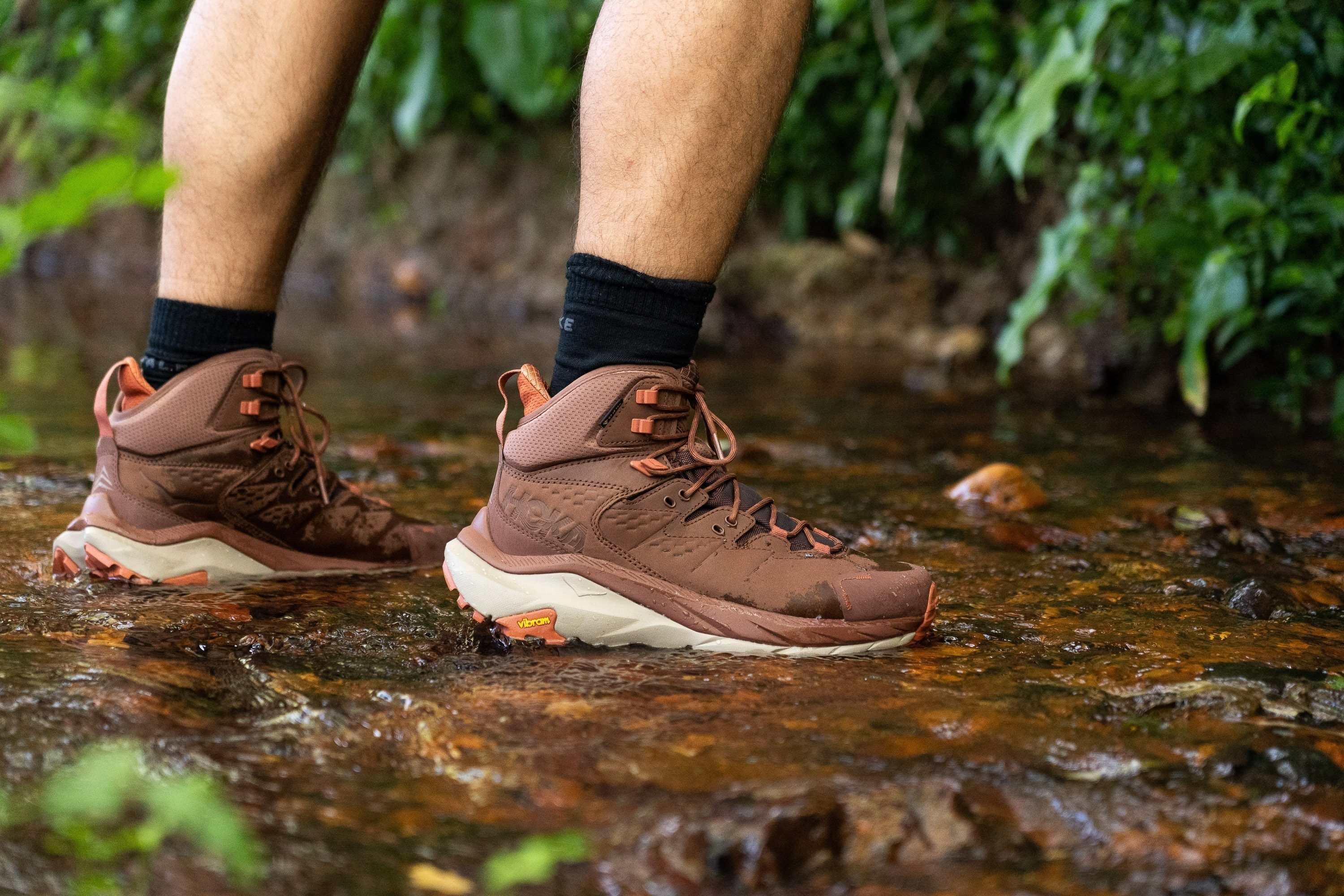
Before your first hike, especially if it is a longer one, make sure you break the boots in!

